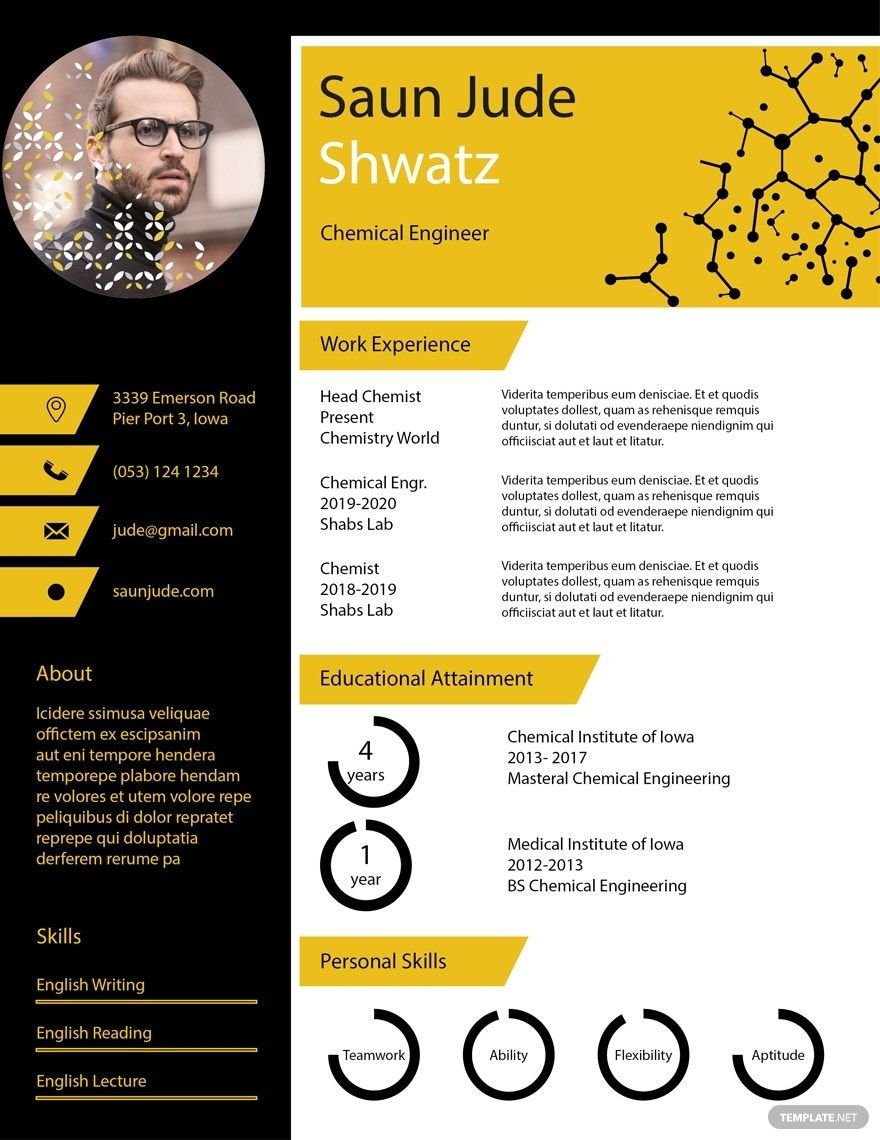Did you use any appliance, electronic device, vehicle, or zipper today? Thank a hardworking engineer! Did you know that without our engineers, modern civilization would never exist and we would be stuck with nothing but sunlight? That explains the essence of engineers and why a large number of people aspire to be one. If you are one of those who yearned and studied for an engineering career, you need a resume to join the world of builders, inventors, and designers. To kick-start your career, we offer ready-made and high-quality engineering resume templates! Every template is 100% customizable, easily editable, and available in all versions of Adobe Photoshop. It is, of course, printable too! So download our engineering resume templates now!
How to Create Engineering Resumes in Adobe Photoshop
Resumes perform as a bridge that connects the applicant to the employer. This bridge decides if the job-seeker deserves a position in the company and if they possess the qualities to be an employee. Despite it being a simple piece of paper, that basic resume is the first impression of the company, which helps in considering whether the aspirant is worthy of a job interview or not. It is the reason why you need a resume and why you need to put your utmost effort into making it. There is no difference in the engineering profession. If you want to take part in making lives easier and be an engineer, you still need a thoroughly-made resume. So, here are some helpful steps in creating an engineering resume in Adobe Photoshop.
1. Choose the Engineering Career Option
Engineering is a broad course. There are many types and career options for an engineering college student. Some of which are mechanical, civil, aerospace, chemical, electrical, technical, or an automation engineer. You have to obtain a college degree in that specific program for you to get the job. So, choose the career path that relates to your course for a higher probability of getting employed.
2. Select an Appropriate Type of Resume
There are four main types of resume: chronological, functional, combination, and targeted. The chronological resume, as the name suggests, contains a history of your past jobs in sequential order. This resume is more beneficial for applicants who have no lapses in their career history. The functional resume focuses on the skills and experiences of the applicant; it does not emphasize on any work history. A functional resume is more applicable for freshers or fresh graduates who are just starting to find an engineering job; it can also be called a beginner resume. The combination is a mixture of both chronological and functional. It focuses on the skills and traits, and it also includes a chronological list of work history. The targeted resume only focuses on your skills, experiences, and work history that are related to the chosen career. It does not include those that are irrelevant to the job. Choose which of the four types is more apt for your application.
3. Make an Eye-catching Header
Resumes have headers that serve as a self-introduction to the company. It contains the name, the address, and the contact information of the applicant. To begin, open a new formal document in Adobe Photoshop. Then, insert the pieces of information at the top of the paper. Make the name more prominent than the other details since it helps the employer in remembering you. The headers give the very first impression, so select a professional self-portrait. Choose an organized format for your header.
4. List the Experiences and Skills
Afterward, list all your achievements, experiences, and skills according to your decided resume type. One can expect creative, problem-solver, can work under pressure, technical-aware, and many more in an engineering resume. Be sure to include the necessary and relevant information that can give you a higher chance of winning the position. After listing, recheck any unnecessary detail and misspelled words of your one-page or two-page resume. Then, save the file. Finally, print the professional resume and hand it to your employer.






















